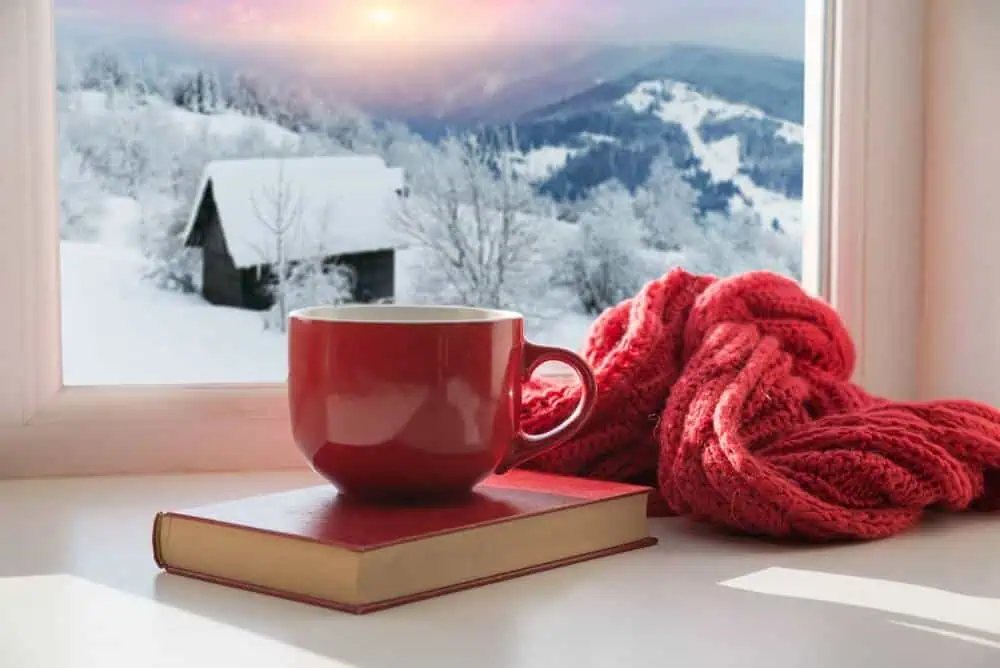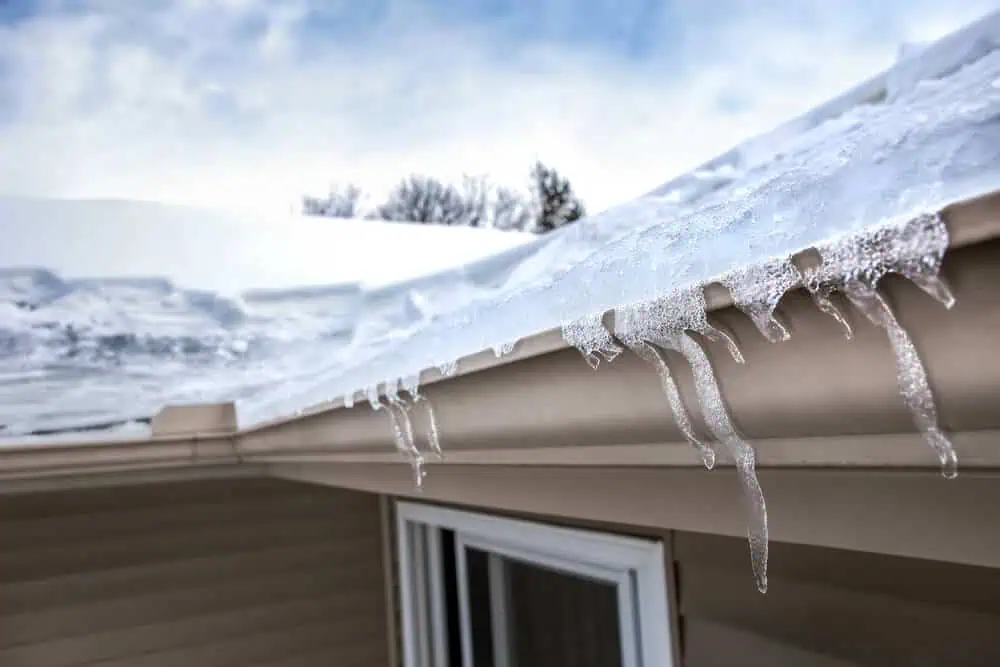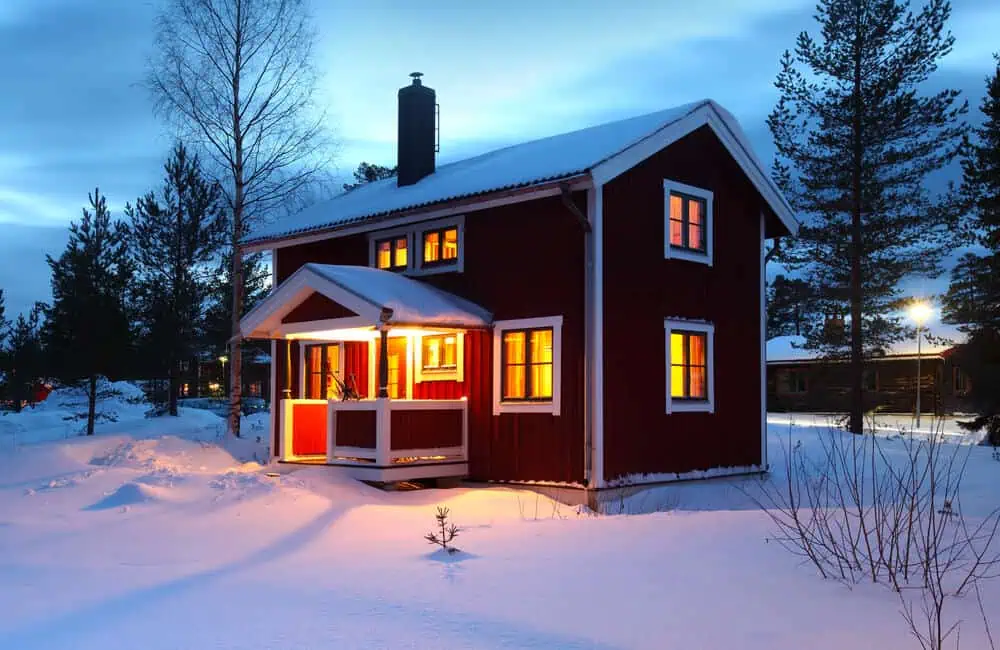Winter is hard on a house. The freezing temperatures during the cold months ahead can cause utilities to run constantly, throwing energy efficiency to the wind during the heating season. Pipes can also freeze and burst, causing expensive damage. Ice dams can freeze on a roof, forcing melted water back under the shingles and into the home. There are a number of other issues that can occur in the winter, but learning how to winterize a house properly will help protect your property.
1. Inspect and Prepare the Heating System
You’ll want to perform a heating system inspection before the winter months. When properly functioning, the heating system will prevent freezing and reduce the risk of damage and will also keep the home comfortable. This inspection should go beyond simply replacing furnace filters, which most homeowners can handle on their own.
A professional inspection is best. A trained technician will be able to spot potential problems, such as aging or failing components, faulty air sensors, the restricted flow of heat, deteriorating seals, inefficient burns, and more.
Homeowners should also consider installing a programmable thermostat for each of their zones. Programmable thermostats can regulate temperature throughout the day, lowering the temperature overnight and during the work day, and raising the temperature in the morning and evenings, when people are home, allowing homeowners to save money during the cold season.
2. Protect Pipes from Freezing
Frozen pipes are some of the most common and most destructive problems homeowners can face during the cold weather. As the water in a pipe freezes, it expands, splitting the pipe. This can cause a massive leak, especially if no one is home to shut off the water lines. This is common in unheated areas like crawl spaces, basements, and attics. It can also occur under cabinets in extreme cold snaps.
Fiberglass insulation is helpful for retaining heat, but it might not be enough to keep pipes from freezing. Reduce the risk by also installing foam pipe insulation sleeves, as they’ll retain heat and prevent cold air from reaching the pipe.
Also, for homeowners who leave their homes vacant for an extended period, consider shutting off the main water supply to the home and drain the remaining water from the system (including the water heater) to avoid frozen pipes. Do consider that boilers require water supply to operate, though, so shutting off the water to these systems can actually be counterproductive in some cases.
3. Install Safety Sensors
One way to safeguard your home against the damage cold weather can cause is to install sensors. Low-temperature sensors can be installed throughout the home, especially in areas where the risk of freezing pipes exists. Should the heat stop working or a window be left open, the sensor will alert the homeowner.
Also, consider installing leak detectors. Place them under cabinets, the basement floor, and under water-utilizing appliances like dishwashers, washing machines, boilers, and water heaters. These sensors will detect water and alert the homeowner to the issue.
4. Winterize Exterior Features
Winter-related issues aren’t just interior. There are some exterior chores you should prioritize to avoid damage as well.
First, make sure your gutters are clear. If not, melted snow can collect and freeze, and the weight can pull the gutters from the fascia. Also, frozen water will continue to collect and cause ice dams, preventing the melted water from draining properly, forcing it back under the shingles where it can seep into the home and cause a tremendous amount of damage that is hard to control. Also, reduce the risk of ice dams by ensuring your roof insulation is properly installed and in place.
Other exterior tasks include:
- Check that windows and doors are caulked and sealed, and that their locks work properly.
- Disconnect garden hoses and shut off the water supply to exterior hose spigots to prevent them from freezing.
- Lubricate hinges to keep them working smoothly in cold weather.
- Ensure any exterior penetrations (dryer and bathroom vents, for example) are in place and properly sealed.
- Shut off sprinkler systems and fountains and drain their water.
- Ensure any garage heaters or other heat supply units are operational and safe.
- Check snowblowers and other snow removal equipment to ensure it’s working properly.
- Stock up on driveway salt or sand.
5. Prepare the Water Heater and Drain Water Lines
Your water heater needs attention before the winter, as well.
First, be sure to set it to an efficient temperature so that it’s not heating as often. Also, shut off the water heater and its water supply and drain the sediment from the tank. Once drained, turn on the water and flush the water heater. This will allow the water heater to work more efficiently throughout the winter.
Also, if there are any areas of the home that are unheated and unused, consider shutting the water off to those zones. A plumber can easily install shut-off valves if the home isn’t already equipped with them, allowing homeowners to prevent freezing water lines. The process is simple and will make the home easier to prepare for winter.
6. Seal Windows and Doors
Windows and doors should be sealed before winter, as these features are often guilty for much of a home’s heat loss. Check for cracks around the interior and exterior of the windows and doors. Remove old, cracked caulk and replace it with new silicone caulk. If your windows have storm windows, install them to provide another layer of protection and some improve heat retention.
If you have single pane windows, your windows rattle, the locks don’t latch, or any other similar issues, it might be time for an upgrade. Replacement windows can improve the home’s weather resistance and energy efficiency, tremendously reducing energy costs. They’ll also make the home more comfortable.
7. Prepare for Snow and Wind
Snow and wind can cause a lot of damage. Have a roof inspection performed to make sure your roof shingles are in place and in good condition to prevent an emergency. Your inspection professional will check chimneys and vents as well as their flashing for cracks or other damage. They can also check soffits, fascias, and siding if the company specializes in those projects, as well.
Make sure any shutters are securely attached to the home, that patio furniture is secured or stored away, and that any other necessary repairs are performed before snow and wind can make them worse.
Let Pro Home Improvement Help You Prepare for Winter
Knowing how to winterize a house is essential to avoid freezing temperatures and the costly damage they can cause. From protecting your heating system to insulating pipes and sealing your home against drafts, these simple steps will help protect your property during the cold season. Our team of experienced professionals understand proper house winterization and how to prepare your home for winter. Contact Pro Home Improvement for your winterization needs today.



